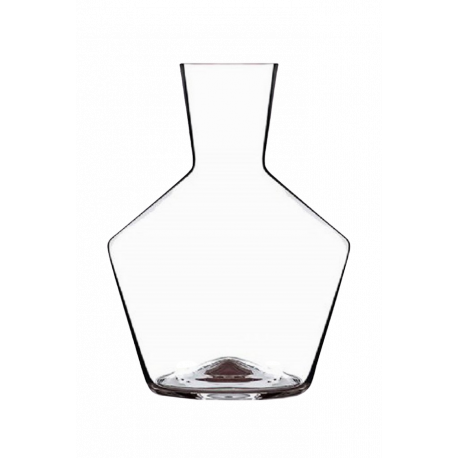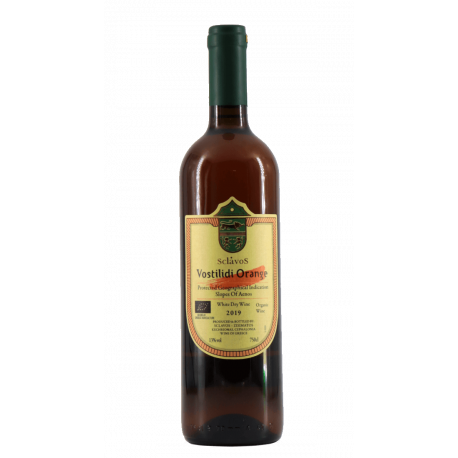What it is: These are essentially white wines as they are produced from white varieties (rarely from redheads such as Roditis or Pinot Grigio for example). They are produced by the method of vinification of reds, ie after extensive extraction of the juice with the skins. As a result, "orange" wines absorb many elements from the skin such as aromas, flavors, tannins and other phenolic ingredients. So they have a different taste and texture from the classic white wines. Often their color is euphemistically orange. It can actually range anywhere in the range from a relatively light gold to a deep, often cloudy, orange. Intensity, depth and hue are primarily related to the time of contact of the juice with the peels (in some cases extraction of many months) and of course to the variety itself, the year and the time of harvest.
How the strange name came about: We could say that the name is initially misleading, or even divisive, as is the case with terms like natural "wines" or "glou-glou" wines. Although it is an ancient style, the term "orange" wine is very recent and is attributed to an English merchant David Harley. The understandable, though not universally accepted, term has prevailed nowadays and so you will see in several wine lists a reference to a separate category of orange wines. If you want to be more "learned" in your expressions, ask for them as skin-contact or amber wines. If again no one understands you, turn it back to orange-orange wine for sure.
How old or how modern is it: How modern do you say a wine that has been produced in this way for 8000 years. Countries like Georgia have a huge tradition of amphorae (qvevri) buried in the ground, where the wine stays in contact with the marcs for many months. Although this tradition in Georgia has never stopped, the renaissance of the style is attributed to the pioneering producers Josko Gravner, Stanko Radikon and Paolo Vodopivec, in Friuli, Italy, as well as to some of their colleagues on the other side of the border, in Slovenia. Sometime in 1997-1998, the group of pioneering producers, feeling full of the over-use of technology and reckless interventions in their wines, began to turn to old methods used by their parents in the wider area.
Are they orange wines and "natural" wines? One of the most common misconceptions about orange wines (besides being made from J oranges), is that they are "natural" wines. Orange wines have to do with a very specific vinification technique (the skins remain in contact with the wine lees), while the term natural wine describes a more general philosophy and is a much broader category. Why are orange wines then confused with natural wines? Prolonged extraction leads to the extraction of "sharp" tannins and polyphenols that act as natural antioxidants in wine. The wine is strengthened and protected so, among other things, the need for the use of sulfites and other interventions is reduced. So many devoted producers of natural wines quickly realized that the prolonged extraction of their white wines with skins was a great way to produce wines with minimal interventions and additions. So there is often a "synergy" between the peels and the non-invasive approach and many, but not all, of the producers of orange wines belong at the same time to the category of "natural".
How shocking their test will be: I still remember the unprecedented shock caused to me by the deep, rich, as if you had gone through a glaze, color in my first contact with them many years ago. And then I came across textures, flavors and aromas for which I could hardly put words. Trying an orange wine is an experience that reshapes the "palate" and at the same time a shocking discovery that not all white wines need to have the same aromatic profile. Tannins (that is, stew) are a building block of orange wines, wait for it, and help to somehow freshen the "palate" and balance the fruit. Of course, there are as many styles as there are colors that you will find in a rosé wine. There are orange wines that you will have a hard time understanding that have come in contact with the skins during winemaking, and others that cover the palate with intense tannins, as if they wanted to be red. Aromas and flavors vary. Dried fruits, orange peel, roasted nuts, iodine, umami, savory are some common descriptive terms that accompany them. Instead of looking for perfumes, better indulge in the sense of texture and the effect they have on the mouth.
What to combine with at the table: Flexibility άλ This is probably the word that best describes orange wines in relation to food. Orange wines stand somewhere between white and red. Of course there are many different styles: among them aromatic "bombs" made from aromatic varieties such as e.g. Moschato, medium volume orange wines with soft structure, full and tannic wines ideal for great aging. I am crazy about orange wines from aromatic varieties with Indian, Thai or other ethnic spicy cuisines. Put a Muscat Orange Nature of Tetramythos, or an Orange Malagouzia of Tatsis, instead of Indian pale, next to Babaji Chicken curry and you will remember me. Another favorite combination is pork kontosouvli with crispy potatoes flavored with mustard, orange, lemon zest and oriental spices. When I am financially good I dream. Of course above all enjoy orange wines with various cheeses. My best aged Pecorino truffle with a large structure and tannic orange wine. Okay, I'm talking about the orange Bostilid of Sklavos. Generally due to body and taste do not be afraid to serve them with what you would serve next to red.
How to maximize enjoyment: The ideal serving temperature again depends on the style. For lighter styles you can try them at around 10-12οC and if you feel that they are very closed, leave them in the glass a little to raise their temperature slightly. In fuller tannic styles, prefer higher temperatures (14-16oC) to unfold all their taste complexity and not be bothered by their tannins. In the most extreme styles, carafe transfusion is often beneficial because it helps the wines open faster. The cloudy color that they have to do with the presence of sediment since many of them as we said are produced with minimal to no interventions.
Grigoris Michailos Dip WSET











![When in Burgundy [Part 4]](/modules/amazzingblog/views/img/uploads/posts/22/l/2-604335dd23cef.png)


![When in Burgundy [Part 3]](/modules/amazzingblog/views/img/uploads/posts/19/l/13-5fddbcaee114c.png)